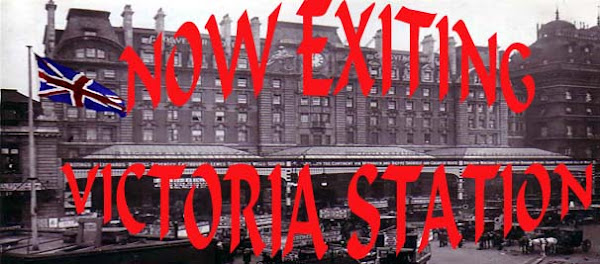Before the close of the second chapter of Howards End I already had my mind attuned to the metaphorical imagery of travel that pervades the whole book. I had only been reading for twenty minutes and I was already cursing the absent-mindedness that had conspired to herd me onto the airplane, where I planned to settle down to three or four hours of peaceful attentive reading, without my highlighter pens. I tried to make a mental note whenever the theme resurfaced, but I’m sure to have forgotten many interesting instances. The metaphor is set up as Margaret broods upon railway stations when she sees her aunt off to Howards End in the beginning of the novel. Each station acts as a gateway to the destinations of its trains. The present is left at the station as the trains progress to any number of possible futures. Throughout the story Forster employs all manner and methods of transportation and each one set up a red flag for me. From the dusty broughams and hansoms that move at a slower pace to the motor cars that seem to increase in number at every mention until they fill the city with an unearthly din and clouds of exhaust. It seemed to me, and I suppose this may be one reader’s erroneous theory, that the concrete subject of the physical manifestation of progress, of the change from the “old world” to the “modern world,” is shown through the physical transportation of the characters. Motion, in a crude sense, representing progress. My paperclips would cover the pages that support this claim; in fact, so would my highlighters, had I not left them sitting sad and lonely upon my desk at home.
An element of modernism (one of the few solid elements I’m capable of pinpointing at this moment) is the non-linearity of the narrative structure. It’s as if Forster is not ready to jump into it with heart and soul, but has, none-the-less, waded in up to his waist and started splashing around a bit. There were time when I found the chapters a bit hard to follow as he often placed chunks of time and major events between the final words of one chapter and the opening line of the next. Overall, I felt that my own shortcoming not withstanding, this structure worked admirably in Howards End. It felt as though Forster sought to place the reader right along with the characters, forgetting the trivialities and acting too busy during times of moment to stop and narrate the circumstances of the major events. Last week I spoke of truth versus Truth. The Truth of a story demands that the salient details be described so that a firm understanding of the message can be appreciated. The truth of life is that no person declares a message or a moral based on every piece of evidence their life has produced. So it is with Howards End, and, I would deduce from the structure of the story, much of modernist writing.
Coming as I do from a background of television and film studies, it is there that my foundation of theory and criticism is based. My knowledge of Queer Theory is much less spotty than my knowledge of modernism in general, but I found that reading literature through that lens seemed as forced as I had always found it to be in film. I don’t doubt that Forster’s sexual orientation influenced his writing. All writing is informed by the experiences and dispositions of the author. I somehow feel, however, that to reprocess, so to speak, Forster’s work through the Queer Theory machine, strips it of a quality of complexity and completeness. To assign more elements of his work to his homosexuality than actually germinated from that seed is, in my opinion, somewhat of a disservice to the author whose work should function as a unified whole. I admit to a preexisting bias, in my film studies classes I always felt that Queer Theory tended slightly toward the self-indulgence of the movement. I’d like to read more and have the opportunity to shatter my bias, if I can.
Monday, January 21, 2008
Subscribe to:
Post Comments (Atom)



No comments:
Post a Comment